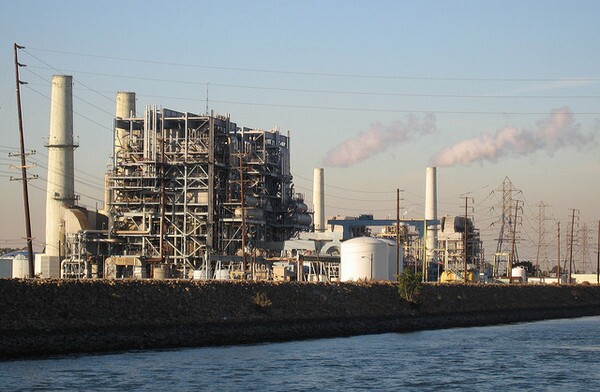California a Step Closer to Carbon Cap and Trade

This Seal Beach gas-fired power plant will need to buy carbon allowances next year. | Photo: John Sullivan/Flickr/Creative Commons License
The California Air Resources Board (CARB) has reached a crucial, if forbiddingly wonky, milestone in its implementation of the state's Cap and Trade program for carbon dioxide. California's largest emitters of carbon dioxide now have a computerized tracking system to allow them to trade carbon credits starting in 2013 -- but they only have until the end of next month to sign up.
The Compliance Instrument Tracking System Service (CITSS), which CARB launched this month with the Western Climate Initiative, will be a central database to track carbon credit trades among the state's biggest polluters.
The Cap and Trade system, enacted under California's landmark climate change law AB 32, is intended to provide incentives for polluters to reduce emissions through greater use of conservation, renewable energy, and alternative technologies.
Digging into the mechanism behind CITSS is tough going. For instance, a document made available by the Western Climate Initiative that purports to explain how CITSS should work is entitled "Generic Business Requirements: Actors, Processes, Interfaces, Reports and Non-functional Requirements." It doesn't get much clearer past the title page. But the gist of CITSS is that it functions as a database that will authorize and track all carbon allowances as they're allocated to polluters, and as the polluters trade them among themselves or retire them.
Those allowances -- each corresponding to a metric ton of carbon emissions -- will be sold at auction under CARB's supervision starting in November. A high demand for allowances will raise the cost of carbon allowances meaning it will cost more to emit carbon. This is supposed to provide an increased financial incentive to lower emissions so that you can buy fewer allowances, or even sell the ones you have.
Which means it may eventually cost less to conserve energy, or to use renewables, than to burn fossil fuels in California.
And that's not hard to understand at all.
ReWire is dedicated to covering renewable energy in California. Keep in touch by liking us on Facebook, and help shape our editorial direction by taking this quick survey here.


